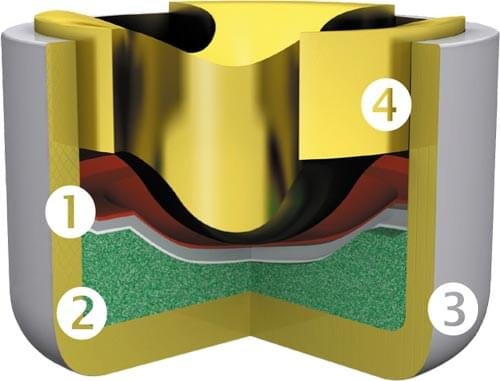The Best Strategy To Use For Reloading Primers
Table of ContentsThe Basic Principles Of Winchester Primers Some Known Details About Reloading Primers The Best Guide To Primers For SaleUnknown Facts About Winchester PrimersThe Basic Principles Of Rifle Primers
Element of the weapon cartridge for launching propellant combustion In weapons and artillery, the primer () is the chemical and/or gadget in charge of starting the propellant combustion that will press the projectiles out of the gun barrel. In very early black powder weapons such as muzzleloaders, the guide was basically the exact same chemical as the primary propellant (albeit generally in a finer-powdered form), but put right into an exterior flash pan, where maybe stired up by an ignition resource such as a sluggish match or a flintlock Some muzzleloaders have primers like cap weapon caps.
Examples include handgun cartridges, rifle cartridges, and shotgun coverings. Bigger artillery pieces on the other hand generally use electric priming. In artillery the primers are frequently a separate part, put inside the barrel to the back of the primary propellant chargebut there are various other instances of weapons, including for instance some automated weapons, designed to fire cartridges with integral electrical guides.
Indicators on Winchester Primers You Should Know

This hole was full of carefully ground powder, which was after that sparked with a hot coal or lantern. With the introduction of hand-held guns, this ended up being an undesirable method of shooting a weapon. Holding a burning stick while attempting to pour a fee of black powder meticulously down a barrel is harmful, as well as trying to hold the gun with one hand while at the same time focusing on the target and also looking for the touchhole makes it extremely hard to fire precisely. [] The first attempt to make the process of shooting a small arm simpler was the "matchlock".
, and dried. After the gun was packed and the touchhole primed with powder, the burning suggestion of the suit was positioned so that the lock would bring it right into contact with the touchhole.
How Primers For Sale can Save You Time, Stress, and Money.
This brought the suit down to the touchhole, sparking the powder - https://www.directorynode.com/author/relodprim3rs/. With mindful focus, the slow-burning match can be kept melting for long periods of time, as well as the use of the lock device made rather accurate fire possible. The following revolution in ignition technology was the "wheel-lock".

The covered flashpan also provided some capacity to endure bad weather. rifle primers. Wind, rainfall, and also damp weather would render a matchlock ineffective, however a wheel-lock that was loaded as well as waterproofed with visite site a little bit of grease around the flashpan could be terminated under a lot of conditions. The wheel-lock enjoyed only a quick period of appeal before being superseded by a simpler, extra durable style.
Examine This Report about Small Pistol Primers
The flint was held in a spring-loaded arm, called the "penis" from the similarity of its activity to a pecking hen. The dick revolved with approximately a 90-degree arc and was held in the tensioned, or "cocked" setting by a trigger.
The "half-cock" setting held the cock midway back, and also made use of a deep notch to ensure that shooting would not release the penis. Half-cock was a security placement, utilized when packing, saving or bring a packed flintlock. The "full-cock" position held the penis right back and was the position from which the gun was discharged.
It functioned as both a flashpan cover and a steel striking surface for the flint. The frizzen was hinged and also spring-loaded to ensure that it would certainly lock in the open or closed placement. When shut, the striking surface was placed to make sure that the flint would strike at the proper angle to generate a spark.
The Ultimate Guide To Primers In Stock
The flintlock mechanism was simpler as well as stronger than the wheel-lock, and the flint and also steel provided a good, dependable source of ignition. The flintlock stayed in army service for over 200 years, and flintlocks are still made today for historic re-enactments as well as muzzle-loading target competition, as well as for seekers that delight in the additional challenge that the flintlock provides.
By the middle of the 19th century, the percussion or caplock system was well established., as it was simpler as well as much more trustworthy than the flintlock.
The flashpan and frizzen were eliminated and also replaced by a tiny, hollow horizontal cylinder (drum) screwed right into the bored-out and also touched flash hole and also lugging a "nipple" over which the cap can be fitted. A "hammer" which additionally had half-cock (for packing as well as applying the cap) and also full-cock positions replaced the penis.